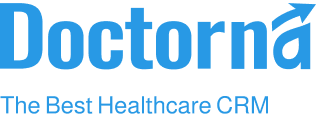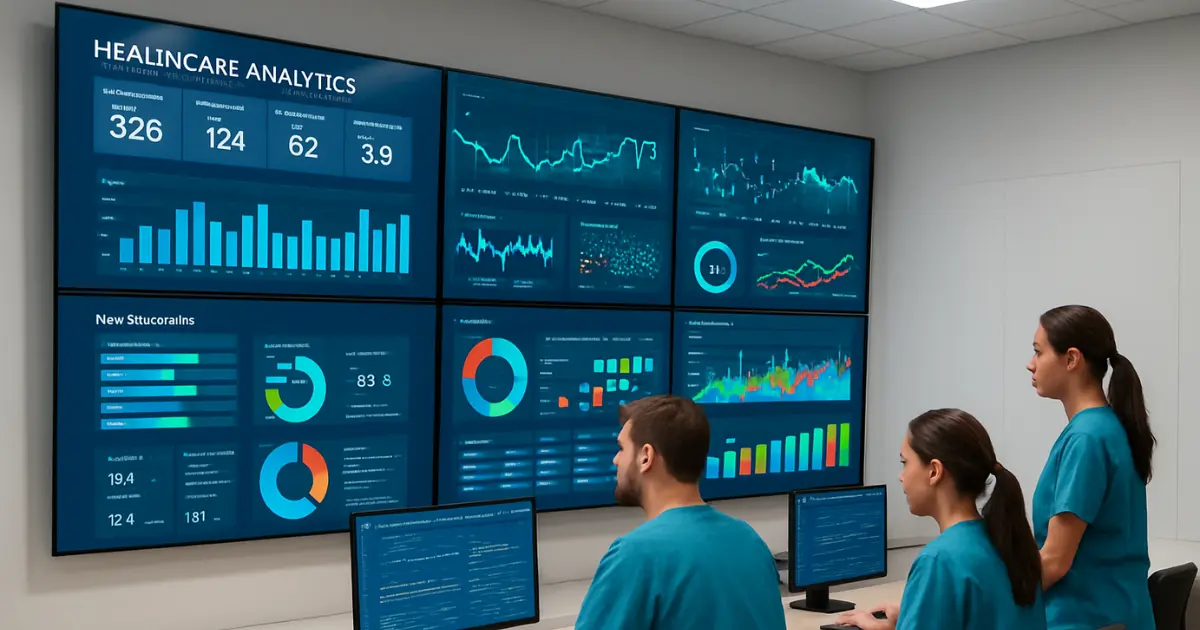In today’s fast-paced healthcare world, managing patient information, appointments, and administrative tasks can feel like a juggling act. Clinics and hospitals are constantly seeking ways to streamline operations, reduce errors, and, most importantly, provide exceptional patient care. This is where the Patient Management System (PMS) steps in as a truly foundational technology.
If you’ve heard the term but aren’t quite sure what it entails, you’re in the right place. This “101 guide” will demystify the PMS, covering its core definition, essential features, various types, and the immense benefits it offers. We’ll also clarify how it fits into the broader landscape of healthcare IT, differentiating it from related systems like EHRs. Our goal is to equip you with a comprehensive understanding of the patient management system and its pivotal role in enhancing efficiency and patient care in today’s digital healthcare landscape.
What is a Patient Management System (PMS)?
At its core, a Patient Management System is a comprehensive software solution designed to manage all administrative and operational aspects of patient interactions within a healthcare facility. Think of it as the central digital hub where all patient-related data and activities converge. It’s the engine that keeps the non-clinical side of your practice running smoothly.
The concept of a PMS has evolved significantly. What started as simple digital record-keeping has transformed into sophisticated, integrated platforms that automate complex workflows and enhance communication.
Key Components of a PMS:
- Patient Information Management System: This is the heart of any PMS. It’s a secure, centralized database for all patient demographics, contact details, insurance information, and administrative history. This forms the backbone of your patient record management system, ensuring data is always at your fingertips.
- Appointment & Scheduling Management: A PMS provides robust tools for booking, rescheduling, and canceling appointments. It often includes automated reminders (via SMS or email) and helps manage clinician availability, directly impacting your patient flow management system.
- Billing & Invoicing: From generating invoices and processing payments to submitting insurance claims and tracking outstanding balances, the PMS streamlines the entire financial aspect of patient care.
- Communication & Engagement: Modern PMS solutions offer features for secure messaging between patients and staff, patient portals for self-service, and automated outreach for follow-ups or health campaigns.
Why a Patient Management System is Essential for Modern Healthcare

Implementing a robust patient management system isn’t just about adopting new technology; it’s about making a strategic investment that yields significant returns across your practice:
- Boosting Operational Efficiency: A PMS automates countless routine administrative tasks, from patient registration to appointment confirmations. This drastically reduces manual workload, minimizes human error, and frees up your staff to focus on more critical, patient-facing activities.
- Enhancing Patient Experience & Engagement: Today’s patients expect convenience. A PMS provides user-friendly online booking, secure communication channels, and personalized interactions. This leads to higher patient satisfaction and a more engaged patient base.
- Improving Data Accuracy & Accessibility: With a centralized patient information management system, all data is consistent and easily accessible. This improves data accuracy, ensures quick retrieval of comprehensive patient records, and supports better decision-making by your care team. A reliable patient record management system is foundational for quality care.
- Reducing No-Shows & Optimizing Resources: Automated reminders sent via the PMS significantly lower missed appointments, optimizing your clinic’s schedule. Furthermore, a well-implemented patient flow management system ensures efficient utilization of staff and facilities, reducing patient wait times.
- Ensuring Compliance & Data Security: Patient data is highly sensitive. A robust PMS includes built-in security features like data encryption, access controls, and audit trails. It also aids in adhering to crucial data privacy regulations such as HIPAA and GDPR, protecting both your patients and your practice.
- Supporting Business Growth: A scalable PMS can seamlessly grow with your practice, accommodating increasing patient volumes and new service offerings. It also provides valuable data for informed business decisions, helping you identify trends and optimize services for greater profitability.
Key Features of a Modern Patient Management System Software
When evaluating patient management system software, look for these critical functionalities that define a truly modern and effective solution:
- 1. Comprehensive Patient Information & Record Management: This is the core. The system should offer centralized digital patient files, securely storing demographics, medical history, allergies, medications, and lab results. A robust patient identity management system within the PMS ensures accurate patient matching and prevents duplicate records across all interactions.
- 2. Advanced Appointment & Patient Flow Management: Beyond basic scheduling, look for online booking portals that integrate directly with your calendar, automated reminders (SMS, email), and real-time calendar synchronization. For optimal efficiency, a strong patient flow management system will include queue management and waitlist optimization features.
- 3. Integrated Communication & Patient Engagement Tools: A modern PMS should offer secure patient portals for self-service (booking, viewing records, making payments) and robust two-way messaging capabilities. To truly stand out, look for multi-channel communication options, including official WhatsApp API integration for instant, preferred patient contact.
- 4. Billing, Invoicing & Financial Management: This feature automates the creation of invoices, processes payments, and facilitates seamless insurance claim submissions. It should also offer robust financial reporting and revenue cycle management tools to give you a clear financial overview.
- 5. Reporting & Analytics: Beyond basic metrics, a powerful PMS provides customizable dashboards and in-depth reports on patient demographics, appointment trends, financial performance, and key operational indicators. Advanced analytics can even provide insights into the effect of patient safety issues on quality management improvement systems by analyzing patterns from incident reports, helping you continuously improve care quality.
- 6. Security & Compliance: Data protection is non-negotiable. Essential features include data encryption (for data in transit and at rest), role-based access controls to limit who sees what, and comprehensive audit trails. The system should inherently support adherence to global data privacy standards like HIPAA and GDPR.
- 7. Customization & Scalability: Your clinic is unique, and your software should reflect that. A good PMS allows you to tailor workflows, forms, and reports to your specific needs. It should also be scalable, meaning it can easily handle growth in patient volume and the addition of new services without requiring a complete overhaul.
Types of Patient Management Systems
Patient Management Systems come in various forms, primarily categorized by how they are hosted and their scope:
- 1. By Deployment Model:
- Cloud-based Patient Management System: These systems are hosted on remote servers and accessed via the internet through a web browser.
- Benefits: Accessibility from anywhere, high scalability (easily adjusts to growing patient volumes), lower upfront IT infrastructure costs, automatic software updates, and robust disaster recovery capabilities. This is often synonymous with a web-based patient management system.
- On-Premise: Less common for new implementations, these systems are installed and hosted on your clinic’s local servers. While offering more control, they come with higher upfront costs, ongoing maintenance, and require in-house IT expertise.
- 2. By Scope/Specialization:
- Clinic-specific PMS: Designed for smaller practices, specialized clinics (e.g., dental, physiotherapy), focusing on their unique workflows.
- Hospital-specific PMS: More complex solutions designed for large hospitals, often integrating with various hospital-wide systems like lab information systems and pharmacy systems.
- Specialty-specific PMS: Tailored for particular medical fields (e.g., optometry, dermatology) with features relevant to that specialty.
Patient Management System vs. Other Healthcare IT Systems
It’s common to confuse PMS with other healthcare IT systems. Let’s clarify the distinctions:
- 1. PMS vs. EHR (Electronic Health Record):
- Patient Management System (PMS): Primarily focuses on administrative, operational, and patient relationship management. Think appointments, billing, communication, and patient engagement.
- EHR (Electronic Health Record): Primarily focuses on clinical data. This includes diagnoses, treatments, lab results, medical history, and clinical notes.
- Synergy: While distinct, they are highly complementary. An integrated patient management system often works seamlessly with an EHR, sharing data to provide a holistic view of the patient – combining their administrative journey with their clinical history.
- 2. PMS vs. HIS (Hospital Information System):
- PMS: Can be a standalone solution for clinics or a specific module within a larger HIS.
- HIS (Hospital Information System): A much broader, more complex, and all-encompassing system designed for large hospitals. It covers virtually all departments, including clinical, administrative, financial, inventory, and human resources.
- Clarification: To directly answer “is patient data management system the same as HIS” or “patient data management system vs hospital information system,” a PMS is a component that manages patient-specific administrative data. An HIS is the entire overarching system for a hospital, which includes patient data management alongside many other functionalities.
Challenges in PMS Adoption & How to Overcome Them
While the benefits are clear, implementing a PMS can present challenges. Being aware of these helps ensure a smooth transition:
- 1. Data Migration: Moving existing patient data from old systems (or even paper records) to a new PMS can be complex.
- Solution: This requires careful planning, thorough data cleansing to remove inconsistencies, and often a phased migration strategy.
- 2. Staff Training & Adoption: Any new software can be met with resistance to change, and there’s a learning curve for staff.
- Solution: Comprehensive training programs, user-friendly interfaces, and clear communication of the benefits to staff are crucial for successful adoption.
- 3. Integration Complexities: Ensuring seamless data flow with other existing systems (EHR, lab, billing) can be technically challenging.
- Solution: Choose a PMS with robust API capabilities and a vendor with a proven track record of successful integrations.
- 4. Security & Compliance Concerns: Protecting sensitive patient data from breaches is a constant concern.
- Solution: Select a PMS with strong, built-in security features and partner with a vendor who demonstrates a clear commitment to regulatory adherence and data protection best practices.
How to Choose the Right Patient Management System for Your Practice

Selecting the ideal patient management system software for your clinic is a critical decision. Here’s a checklist to guide your choice:
- 1. Assess Your Specific Needs: Start by clearly defining your clinic’s size, specialty, average patient volume, and current workflows. Pinpoint your biggest pain points that you need the PMS to solve (e.g., long wait times, missed appointments, fragmented data).
- 2. Research & Shortlist Vendors: Look for reputable providers specializing in patient management system software. Read online reviews, request case studies from similar clinics, and get recommendations.
- 3. Prioritize Key Features: Evaluate potential systems against the essential features discussed earlier (Section D), ensuring they align with your “must-haves.” Does it offer a truly integrated patient management system?
- 4. Evaluate Scalability & Support: Can the system grow with your practice as you expand services or patient volume? What kind of implementation support, ongoing technical assistance, and staff training does the vendor offer?
- 5. Consider Cost & ROI: Look beyond just the upfront cost. Factor in subscription fees, potential customization costs, and the long-term Return on Investment (ROI) in terms of efficiency gains, reduced errors, and improved patient retention.
The Future of Patient Management
The evolution of the patient management system is ongoing, with exciting trends shaping its future:
- 1. AI Integration: Artificial Intelligence is moving beyond basic automation to power predictive analytics (e.g., predicting no-shows, identifying at-risk patients) and intelligent chatbots for enhanced patient support and personalized communication.
- 2. Telehealth & Remote Patient Monitoring: Seamless integration of virtual consultation platforms and remote patient monitoring devices will become standard, allowing for continuous, convenient care.
- 3. Enhanced Patient Portals: Future patient portals will be even more interactive, personalized, and comprehensive, offering patients greater control over their health information and self-service options.
- 4. Blockchain for Security & Interoperability: While still emerging, blockchain technology holds promise for creating immutable patient records and enabling highly secure, transparent data exchange across different healthcare providers.
Conclusion
A Patient Management System is far more than just administrative software; it’s a vital tool that underpins the operational efficiency, compliance, and patient satisfaction of any modern healthcare practice. By embracing a well-chosen PMS, clinics can transform their daily operations, reduce administrative burdens, and elevate the entire patient experience.
Choosing the right PMS is a strategic investment that paves the way for future growth, allowing your clinic to thrive in an increasingly digital and patient-centric healthcare landscape. Doctorna offers a comprehensive patient management system software designed to meet these modern demands, empowering your practice to deliver exceptional care.
Frequently Asked Questions (FAQs)
Q: What is the difference between a patient management system and a hospital information system (HIS)?
A: A patient management system primarily focuses on patient-centric administrative tasks and interactions within a clinic. A hospital information system (HIS) is a broader, more complex system designed for large hospitals, encompassing all departments (clinical, administrative, financial) and often includes a PMS as one of its modules.
Q: Is a cloud-based patient management system secure for patient data?
A: Yes, a reputable cloud-based patient management system employs advanced security measures like encryption, multi-factor authentication, and adheres to strict data privacy regulations (like HIPAA and GDPR), making it a secure option for patient data.
Q: How does a patient management system improve patient flow?
A: A patient flow management system within a PMS streamlines appointments, reduces wait times, and optimizes patient movement through a clinic via features like online booking, automated reminders, and queue management.
Q: What is a patient record management system?
A: A patient record management system is the core component of a PMS that focuses specifically on the secure storage, organization, and retrieval of all patient medical and administrative records in a digital format.
Q: Can a patient management system integrate with my EHR?
A: Yes, a key characteristic of an integrated patient management system is its ability to seamlessly integrate with Electronic Health Record (EHR) systems, allowing for a unified view of patient data across both administrative and clinical platforms.
FAQs about Doctorna
Q: How does Doctorna’s Patient Management System differ from a traditional EHR/EMR system?
A: While both manage patient records, Doctorna’s PMS focuses on operational streamlining, patient engagement, and administrative efficiency (scheduling, communication, billing). It can also integrate seamlessly with a separate EHR/EMR to provide a holistic view for clinical data.
Q: Is Doctorna’s PMS compliant with local regulations?
A: Yes, Doctorna’s PMS is built to ensure compliance with local regulatory frameworks, ensuring your clinic operates within its specific guidelines and contributes to an integrated healthcare ecosystem.
Q: What is the typical implementation timeline for Doctorna’s Patient Management System in a clinic or hospital?
A: Implementation timelines vary based on your facility’s size and complexity, but our streamlined process ensures efficient setup. It can range from a few weeks to a couple of months, including data migration and staff training.
Q: Can we migrate our existing patient data from our current system to Doctorna’s Patient Management System?
A: Absolutely. Doctorna offers robust data migration services to seamlessly transfer your existing patient records from previous systems, ensuring no loss of crucial information and a smooth transition for your practice.
Q: What kind of training and ongoing support does Doctorna provide for its PMS users?
A: Doctorna provides comprehensive training sessions during the implementation phase and dedicated 24/7 customer assistance. Our expert support team ensures your staff is proficient and any issues are promptly resolved, maximizing your system’s efficiency.
Q: Is Doctorna’s Patient Management System suitable for multi-location clinics and large hospital groups?
A: Yes, Doctorna’s PMS is designed for scalability and multi-location support. Our system allows you to manage multiple branches or a large hospital network from a single, centralized dashboard, making it ideal for growing healthcare groups.







